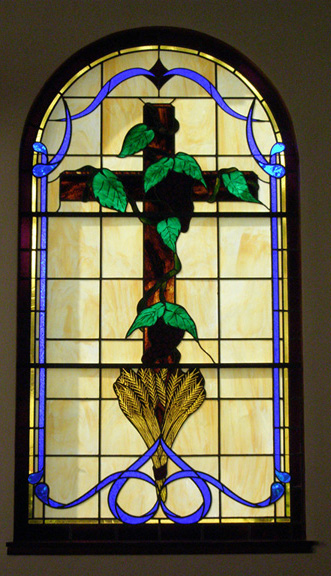Program notes
by Matthew Thomas
Although opera is known primarily as secular entertainment, the repertoire is ripe with scenes in which characters offer up heartfelt pleas to God. Tonight’s program presents a collection of prayerful arias and duets from well-known operas interspersed with other perennial favorites.
Alleluia comes from the Hebrew word for “praise” and appears often in the Psalms of David. The program begins with Mozart’s joyful setting of the Alleluia from the three-movement work Exsultate, jubilate (Rejoice, be glad) composed in 1780. The virtuosic vocal part was written for the castrato Venanzio Rauzinni who played a lead role in Mozart’s opera Lucio Silla the previous year. More recently, it was sung by soprano Rebecca Sjöwall at my wedding.
Though often overlooked by musicologists, the operas of Giacomo Puccini continue to delight audiences around the world. At the end of the first act of Puccini’s opera Tosca, the Italians gather to celebrate the defeat of Napoleon Bonaparte. As the congregations sings a Te Deum, a hymn thanking God for victory, the jealous police chief Scarpia sings an aria telling of his intention to steal the enchanting diva Tosca from the arms of his rival Cavaradossi.
Imprisoned and sentenced to death, Cavaradossi composes a farewell letter to Tosca, which he narrates in his aria E lucevan le stele. As her lover is being tortured in the next room, Tosca is brought in for questioning by Scarpia. Tosca attempts to maintain composure during her interrogation as she sings of her love of music in the aria Vissi d'arte. Apparently, Puccini initially disliked the aria because it interrupted the dramatic flow of the opera. He changed his mind when the soprano soloist fell off the couch during rehearsal one day and sang the number from the floor. Puccini replied, “That’s good. It gives the aria some life.”
Set in Spain during the 1830s, Georges Bizet’s opera Carmen tells the story of an enchanting and temperamental Gypsy girl. In the second act, a bullfighter named Escamillo boasts of his prowess in the Toreador song and attempts, unsuccessfully, to seduce Carmen. Instead, Carmen falls in love with a soldier named Don José and in the third act, the jealous Micaëla vows to split them up in her aria “Je dis que rien ne m'épouvante.”
Leonard Berstein’s classic musical West Side Story is a retelling of Shakespeare’s Romeo and Juliet set in New York City during the 1950s. In this scene, the star-crossed lovers Maria and Tony sneak into a shop and hold a mock wedding. After they recite their vows, they sing the stirring duet “One Hand, One Heart.” At the end of the duet, listen for echoes of Tony’s song “Maria” in the piano accompaniment.
The preghiera (prayer scene) is a convention in Verdi’s operas that usually features the leading lady offering up a bedside prayer before her impending death. In the final act of Verdi’s opera La forza del destino (The Force of Destiny) Leonora cries out to God in the aria Pace, pace mio Dio! before she is stabbed to death by her brother Alvaro.
Puccini’s opera La bohéme begins with a flirtatious encounter between the struggling poet Rudolfo and the seamstress Mimì. Rudolfo introduces himself in a lyrical aria, Che gelida manina that allows the tenor soloist to show off his upper range. Next, the couple sings a charming duet entitled O soave fanciulla. In the second act, the jilted singer Musetta attempts to catch the attention of her ex-boyfriend Marcello in her aria Quando me n’vò, known as Musetta’s waltz.
During the mid 1700s, the German composer George Frideric Handel became famous for delighting English audiences with his Italian operas. When the popularity of Italian opera in England began to wane, Handel shifted his focus to the genre of the oratorio, which had the same elements as opera but with English texts adapted from the Bible. One of the best-known works in the classical repertoire is Handel’s oratorio Messiah, which was first performed for a charity concert in Ireland in 1742. When he first heard the Hallelujah Chorus at a performance of Messiah, the English King George II was inspired to stand, prompting the rest of the audience to follow his lead. We continue to observe this tradition tonight as we invite you to stand and sing this famous chorus.
In Handel’s oratorios, the choruses represent the collective voice of the faithful and the audience is often invited to join in during annual Messiah sing-alongs. As we raise our voices in song, we temporarily abandon our sense of self and are united in collective praise of God’s infinite blessings.
|

